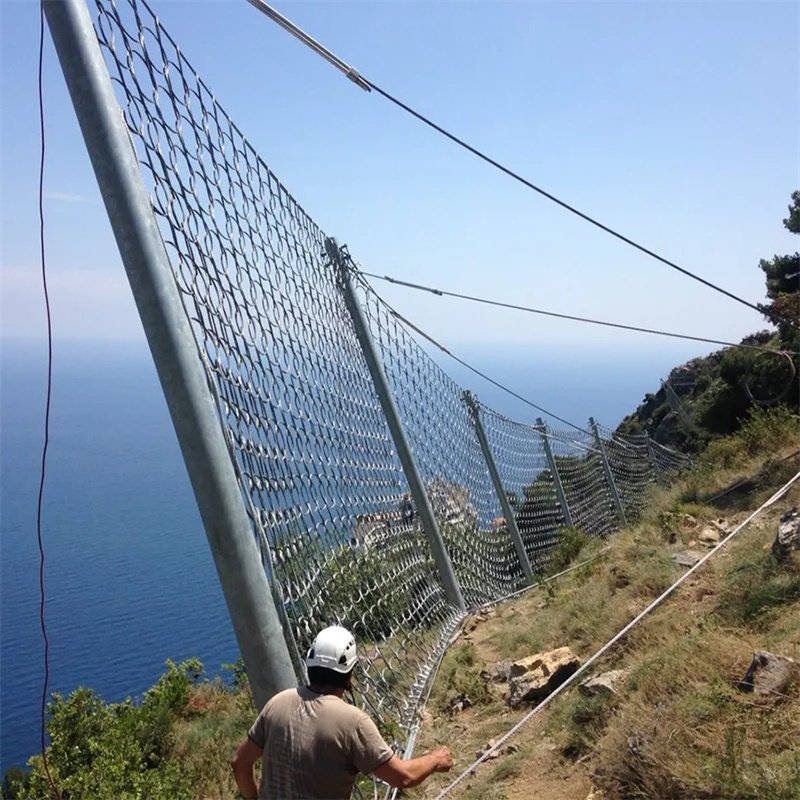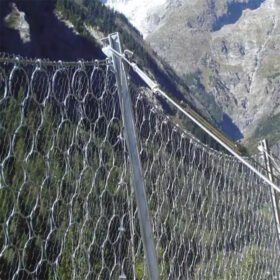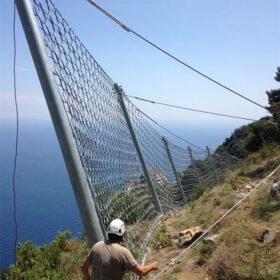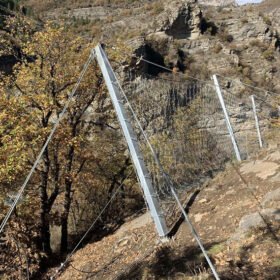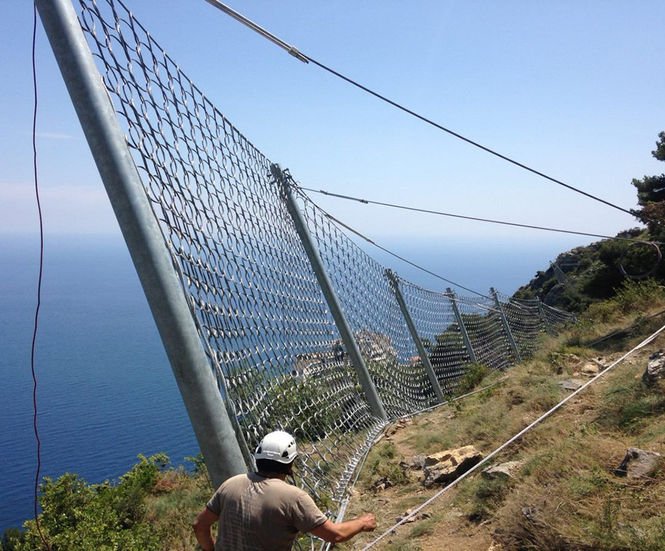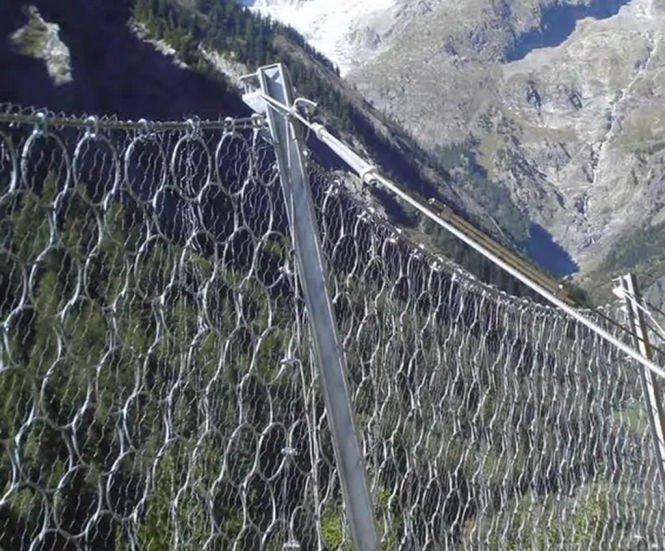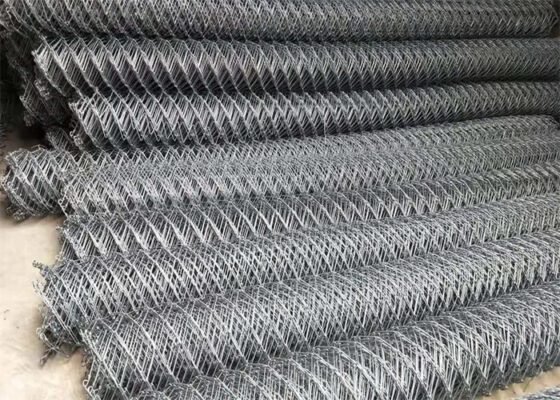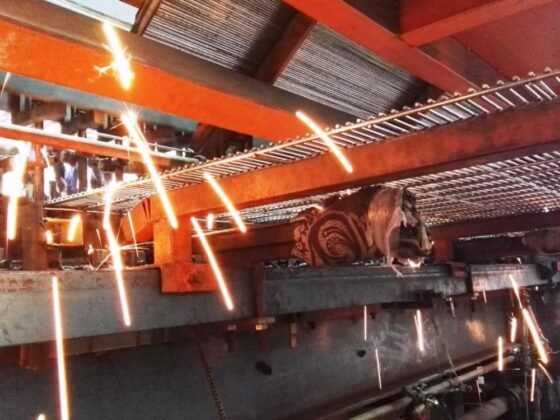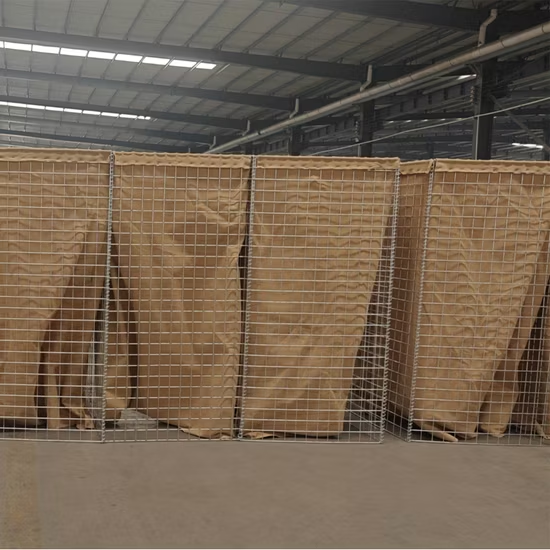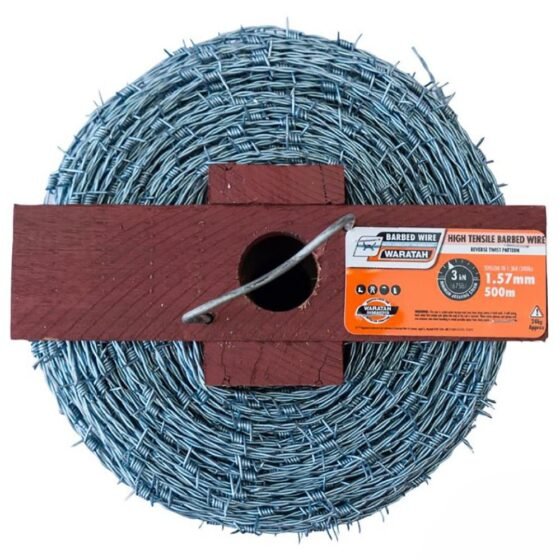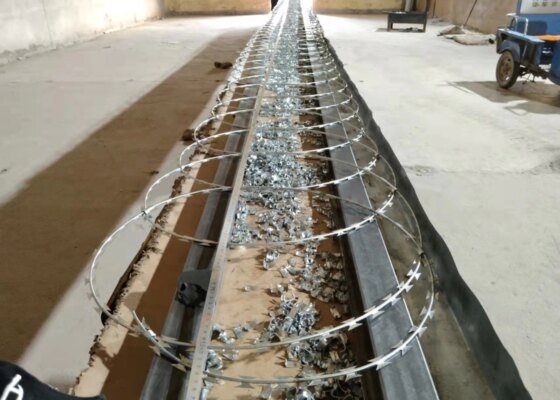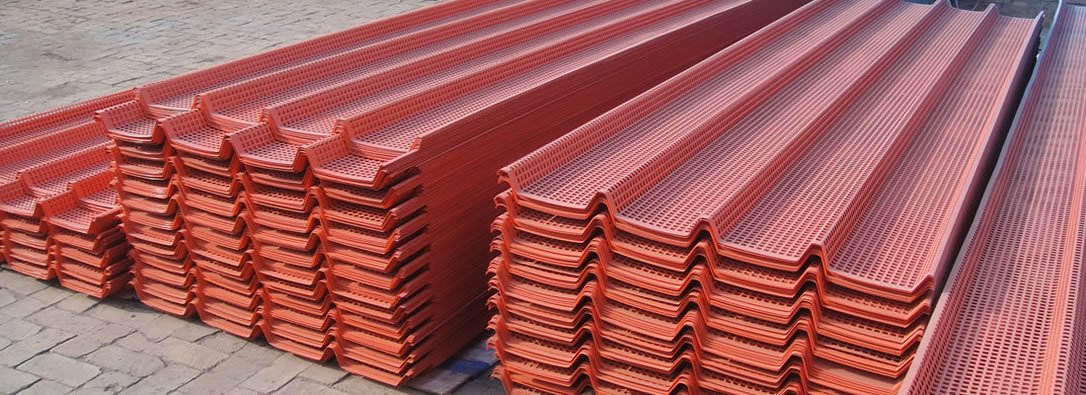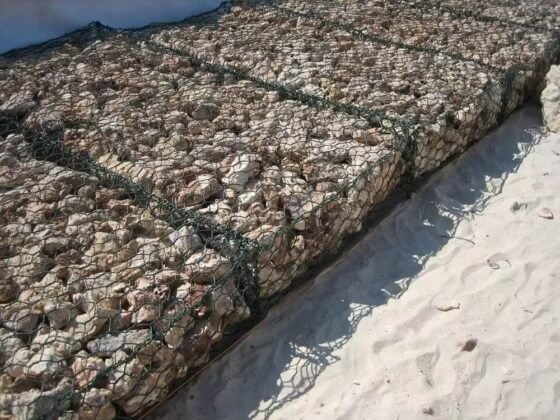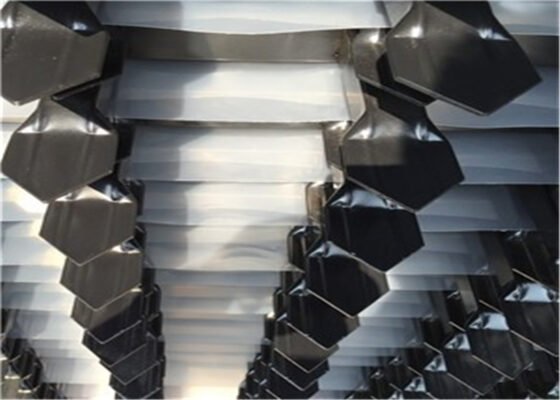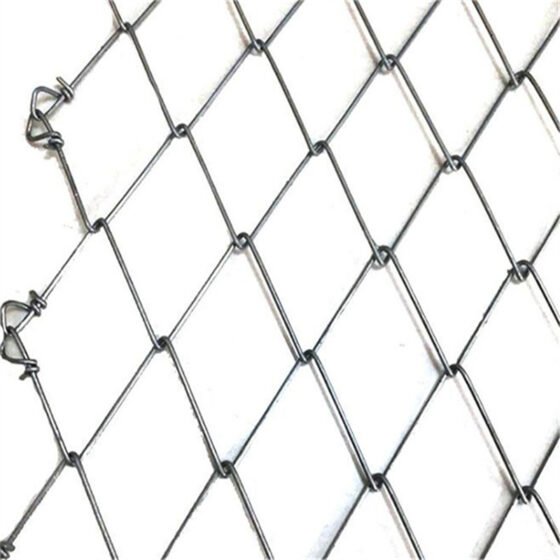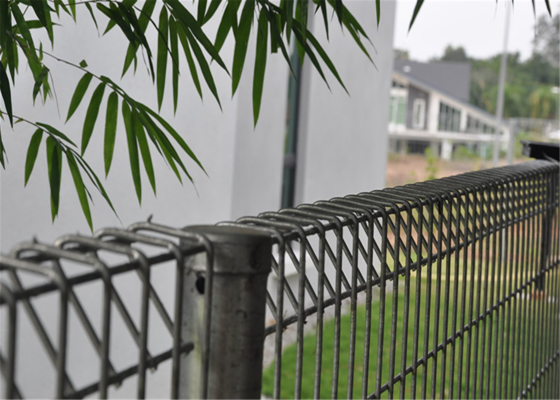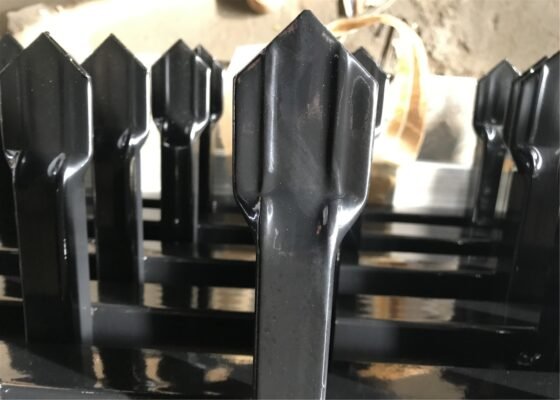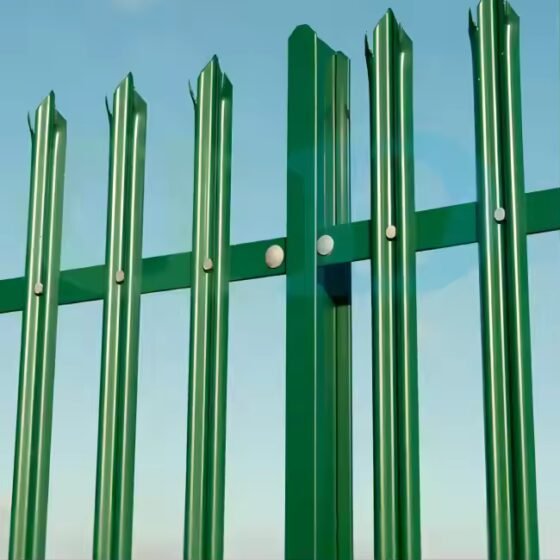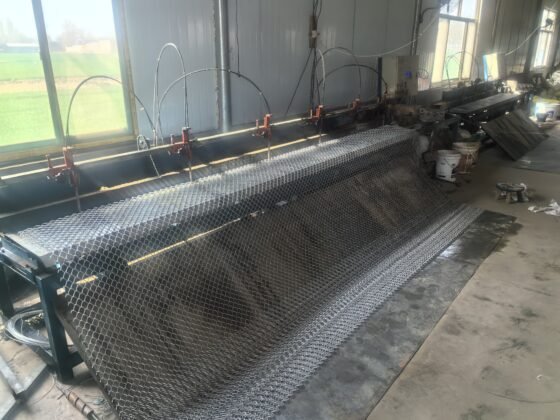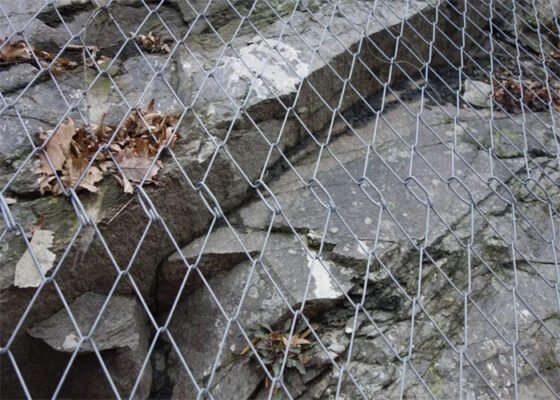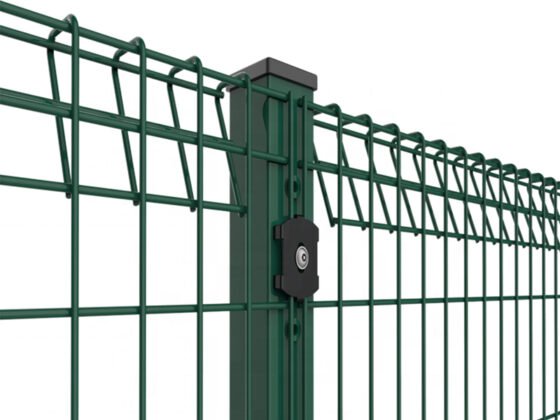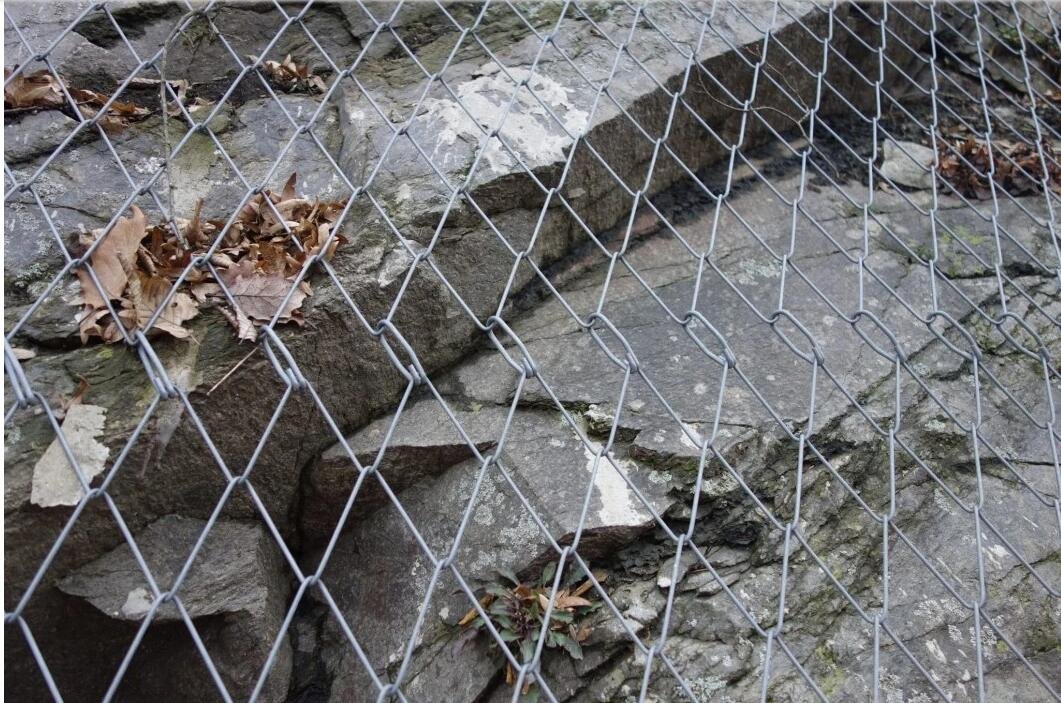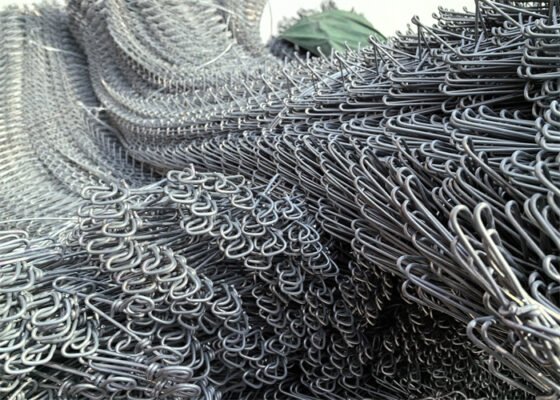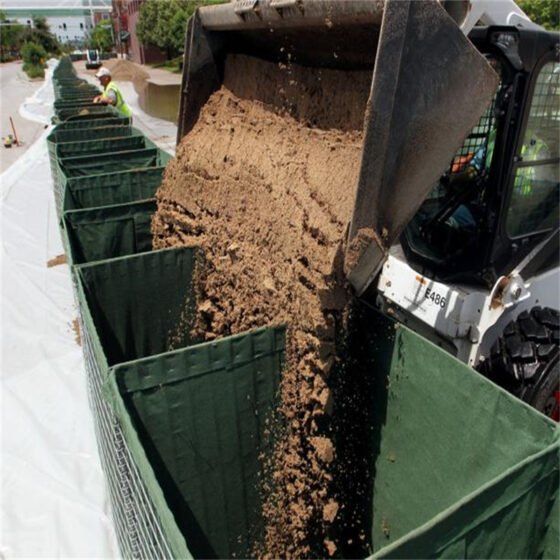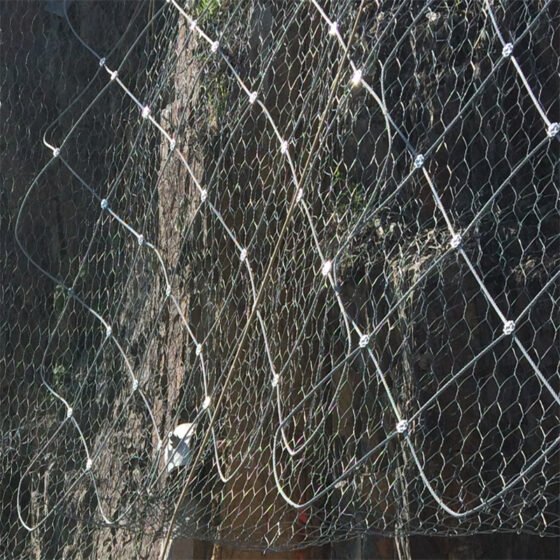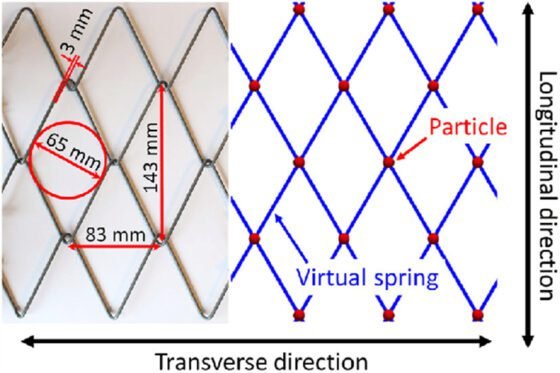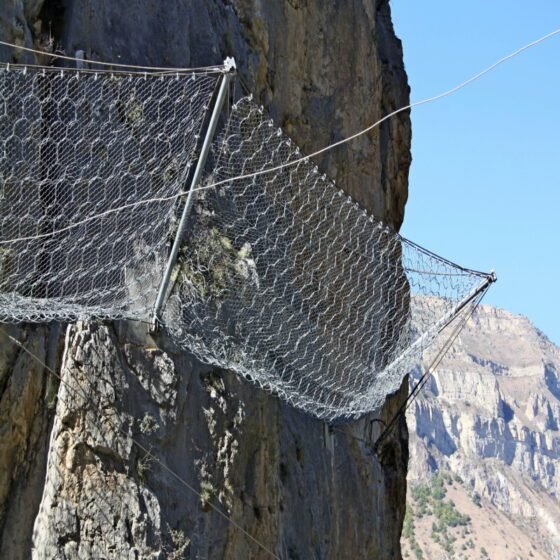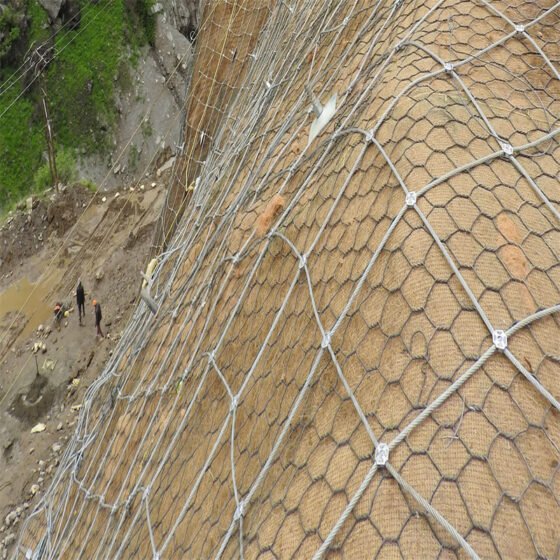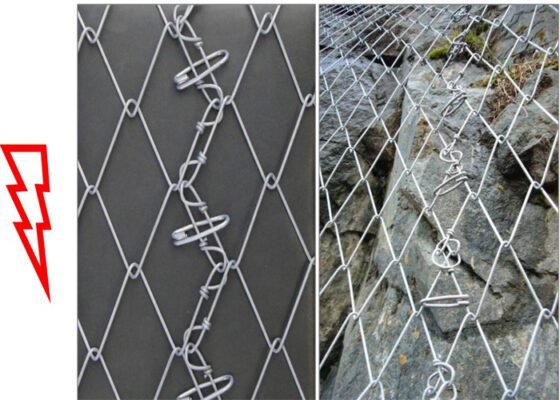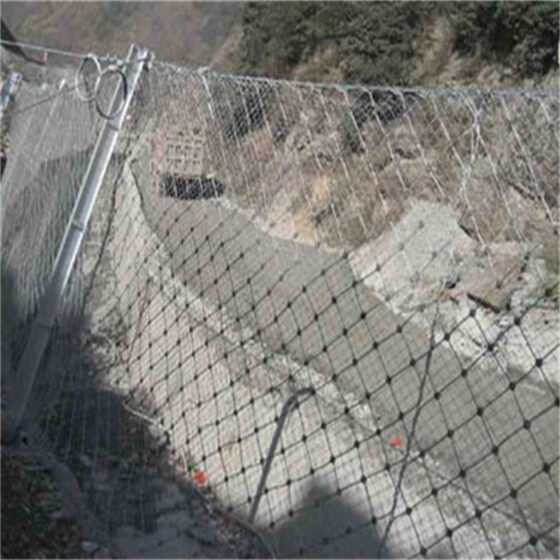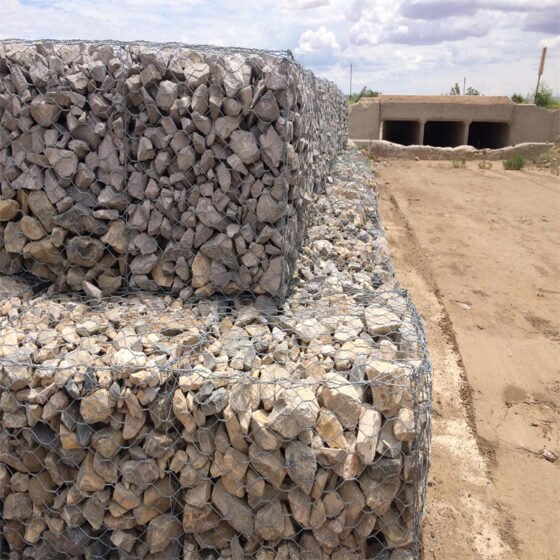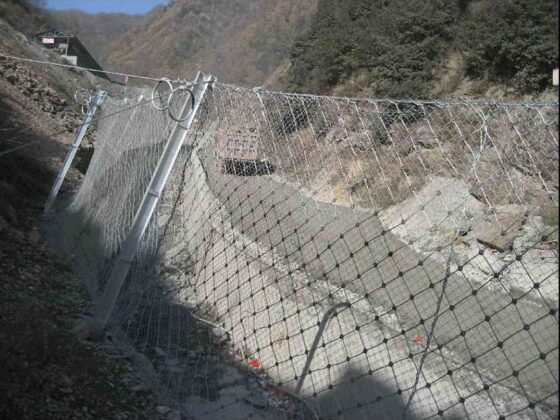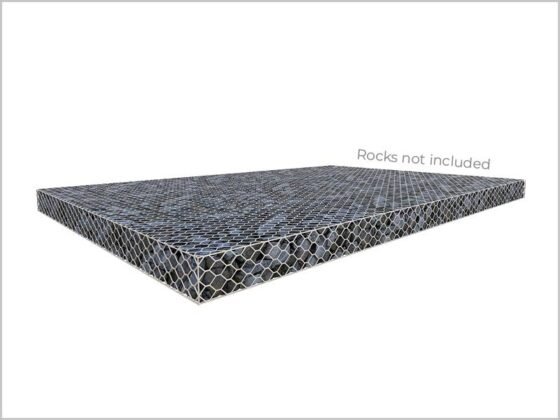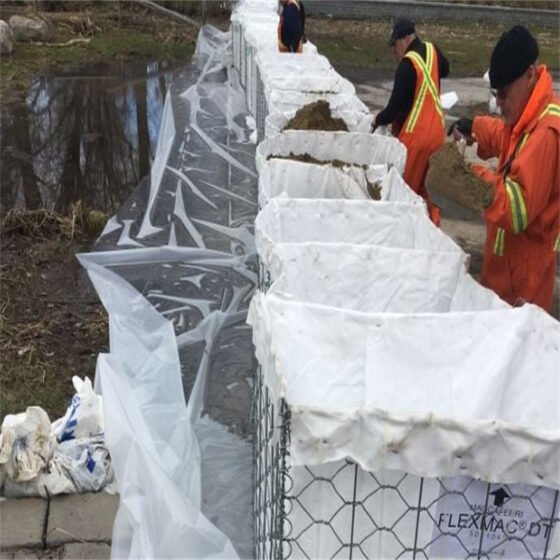BMP’s dynamic rockfall barriers. Various options include debris flow, dynamic, and hybrid barriers. They absorb energy. Options certified from 35kJ to 9000kJ. Cost-effective in challenging areas. Energy dissipating devices control displacement. Barriers come in easy-to-transport kits.
Kits include all necessary components. Straightforward installation by qualified contractors. Full-scale crash tested and certified. Easy inspection for maintenance. Design support provided for clients. Ongoing training and seminars available.
Table 1: Specifications for Models RX-025, RX-050, and RX-075 dynamic rockfall barriers
| Model | Net Size | Supporting Rope | Upper Anchor Rope | Anchor Rope | Sewing Rope | Loading Capacity |
|---|---|---|---|---|---|---|
| RX-025 | Wire rope net: Wire diameter: 8 mm. Mesh size: 250 mm × 250 mm. | 12 mm double steel wire rope. Each spacer has 3 decompression rings | 16 mm single steel wire rope. 1 decompression ring | 12 mm single steel wire rope | 8 mm | ≤ 250 kJ |
| RX-050 | Wire rope net: Wire diameter: 8 mm. Mesh size: 200 mm × 200 mm. | 16 mm double steel wire rope. Each spacer has 6 decompression rings | 14 mm single steel wire rope. 1 decompression ring | 16 mm single steel wire rope | 8 mm | ≤ 500 kJ |
| RX-075 | Wire rope net: Wire diameter: 8 mm. Mesh size: 150 mm × 150 mm. | 18 mm double steel wire rope. Each spacer has 10 decompression rings | 18 mm single steel wire rope. 2 decompression rings | 18 mm single steel wire rope | 8 mm | ≤ 750 kJ |
Table 2: Specifications for Models RXI-025, RXI-050, and RXI-075 dynamic rockfall barriers
| Model | Net Size | Supporting Rope | Upper Anchor Rope | Anchor Rope | Sewing Rope | Loading Capacity |
|---|---|---|---|---|---|---|
| RXI-025 | Steel ring net: Circle quantity: 5. Wire diameter: 3 mm. Circle diameter: 300 mm. | 18 mm single steel wire rope | 16 mm single steel wire rope | 16 mm single steel wire rope | 8 mm | ≤ 250 kJ |
| RXI-050 | Steel ring net: Circle quantity: 7. Wire diameter: 3 mm. Circle diameter: 300 mm. | 22 mm single steel wire rope | 18 mm single steel wire rope | 18 mm single steel wire rope | 8 mm | ≤ 500 kJ |
| RXI-075 | Steel ring net: Circle quantity: 5. Wire diameter: 3 mm. Circle diameter: 300 mm. | 16 mm double steel wire rope. Each spacer and each metal column has 1 decompression rings. Total is 6 decompression ring. | 14 mm single steel wire rope. 1 decompression ring | 14 mm single steel wire rope | 8 mm | ≤ 750 kJ |
Table 3: Specifications for Models RXI-100, RXI-150, RXI-200, and RXI-300 dynamic rockfall barriers
| Model | Net Size | Supporting Rope | Upper Anchor Rope | Anchor Rope | Sewing Rope | Loading Capacity |
|---|---|---|---|---|---|---|
| RXI-100 | Steel ring net: Circle quantity: 9. Wire diameter: 3 mm. Circle diameter: 300 mm. | 18 mm double steel wire rope. Each spacer and each metal column has 1 decompression rings. Total is 6 decompression ring. | 16 mm single steel wire rope. 1 decompression ring | 16 mm single steel wire rope | 12 mm | ≤ 1000 kJ |
| RXI-150 | Steel ring net: Circle quantity: 12. Wire diameter: 3 mm. Circle diameter: 300 mm. | 22 mm double steel wire rope. Each spacer and each metal column has 1 decompression rings. Total is 6 decompression ring. | 18 mm single steel wire rope. 1 decompression ring | 18 mm single steel wire rope | 12 mm | ≤ 1500 kJ |
| RXI-200 | Steel ring net: Circle quantity: 19. Wire diameter: 3 mm. Circle diameter: 300 mm. | 18 mm double steel wire rope. Each spacer and each metal column has 1/2 decompression rings. Total is 8 decompression ring. | 18 mm single steel wire rope. 1 decompression ring | 18 mm single steel wire rope | 14 mm | ≤ 2000 kJ |
| RXI-300 | Steel ring net: Circle quantity: 22. Wire diameter: 3 mm. Circle diameter: 300 mm. | 20 mm double steel wire rope. Each spacer and each metal column has 1/2 decompression rings. Total is 10 decompression rings. | 20 mm single steel wire rope. 1 decompression ring | 20 mm single steel wire rope | 16 mm | ≤ 3000 kJ |
Dynamic rockfall barriers are crucial in various applications where the risk of rockfall poses a threat to people, infrastructure, and the environment. Here are some common applications and benefits of dynamic rockfall barriers:
Applications:
- Road and Rail Infrastructure Protection: Dynamic rockfall barriers are often installed along highways, roads, and railway tracks to protect them from falling rocks and boulders that could cause accidents, disruptions, or damage to vehicles and trains.
- Building Protection: These barriers are used to safeguard buildings, structures, and other built environments located near steep slopes or mountainous areas where rockfall is a risk.
- Pipeline and Utility Protection: Critical infrastructure such as pipelines, power lines, and communication towers are vulnerable to rockfall damage. Dynamic barriers provide protection against such hazards.
- Mine Works: Rockfalls are common in mining areas due to excavation activities. Dynamic barriers help mitigate the risk of rockfall-related accidents and equipment damage in mines.
- Environmental Protection: Protecting natural habitats, water bodies, and sensitive ecosystems from the impact of rockfall is essential for environmental conservation. Dynamic barriers can be deployed in such areas to minimize ecological damage.
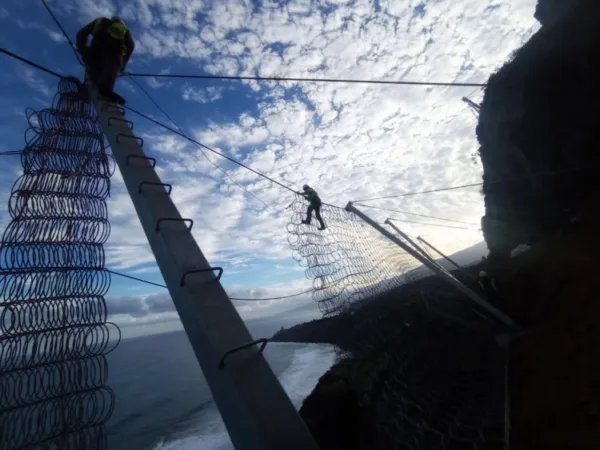
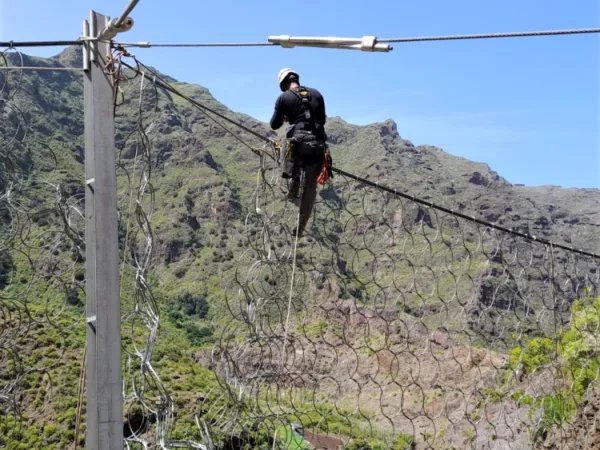
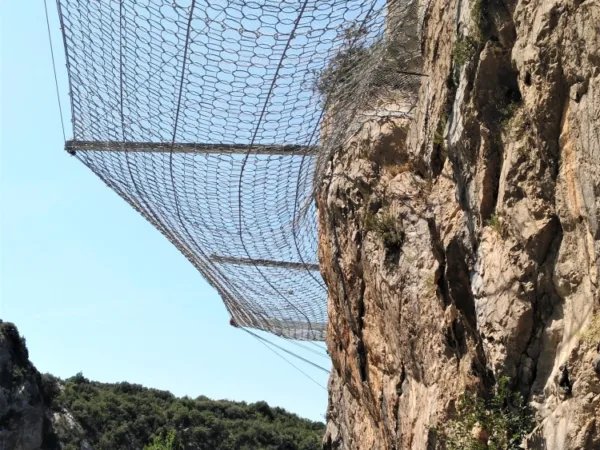
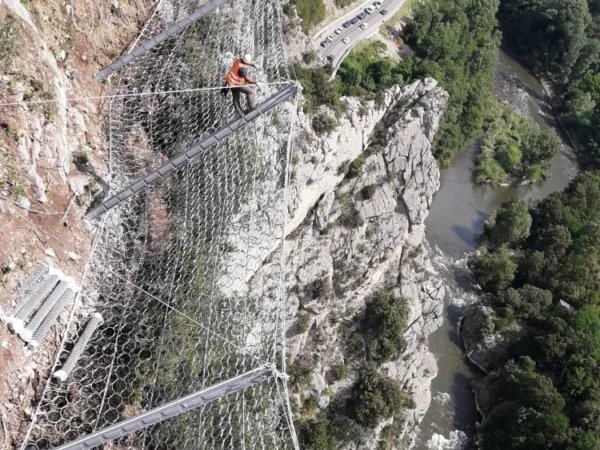
dynamic rockfall barriers Benefits:
- Risk Mitigation: Dynamic rockfall barriers intercept and arrest falling rocks and boulders, reducing the risk of injury to people and damage to property and infrastructure.
- Cost-Effectiveness: Installing dynamic barriers is often more cost-effective compared to repairing or replacing damaged infrastructure and addressing the consequences of rockfall incidents.
- Versatility: These barriers are available in various configurations and sizes to suit different site conditions and project requirements, making them adaptable to a wide range of applications.
- Energy Absorption: Dynamic barriers are designed to absorb and dissipate the kinetic energy of falling rocks, reducing the impact force transmitted to the protected area and minimizing damage.
- Easy Installation and Maintenance: Many dynamic rockfall barriers come as prefabricated systems that are easy to transport, assemble, and install. They also require minimal maintenance, ensuring long-term effectiveness.
- Certified Performance: High-quality dynamic barriers undergo rigorous testing and certification to ensure compliance with international safety standards, providing peace of mind to project stakeholders.
- Environmental Compatibility: Dynamic barriers are often designed with materials and features that minimize their environmental impact, making them suitable for use in sensitive ecological areas.
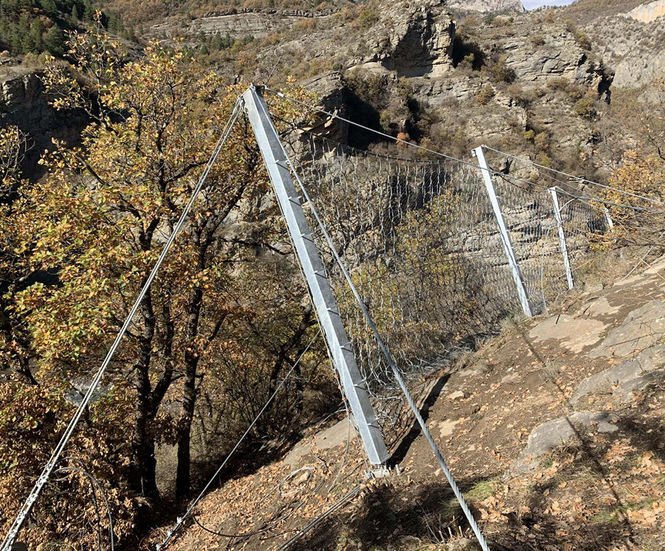
Dynamic rockfall barriers make environments safer by stopping falling rocks. They’re vital in mountainous areas.
Rockfall is dangerous to people and infrastructure. Dynamic barriers intercept falling rocks.
They’re often paired with fencing like hexagonal mesh and chain link. These combos enhance protection.
Together, barriers and fencing create a strong defense. They make areas safer from rockfall.
Dynamic Rockfall Barriers:
Dynamic rockfall barriers are engineered systems designed to intercept and absorb the kinetic energy of falling rocks, minimizing the risk of damage and injury. These barriers typically consist of high-tensile steel cables supported by steel posts, with energy-dissipating elements strategically placed to reduce impact forces. Dynamic barriers are highly effective in intercepting and redirecting rocks, making them a critical component of rockfall mitigation strategies.
Dynamic rockfall barriers absorb kinetic energy, minimizing damage and injury. Highly effective in intercepting rocks.
Hexagonal wire mesh is flexible and durable, filled with stones. Provides stability in irregular terrain.
Chain link fence offers strength, visibility, and airflow. Acts as a secondary barrier.
Combining barriers establishes comprehensive protection. Intercepts large rocks, reinforces perimeter, enhances stability.
In conclusion
Dynamic rockfall barriers are crucial defenses against rockfalls in hilly areas. They intercept and absorb rock energy.These systems proactively reduce risks to people, infrastructure, and the environment. Communities establish comprehensive protection systems.By combining dynamic barriers with fencing like hexagonal mesh and chain link, safety is increased. Damage potential is minimized.Integration of these technologies ensures resilient and secure environments in rockfall-prone areas.
 BMP Slope Protection
BMP Slope Protection
